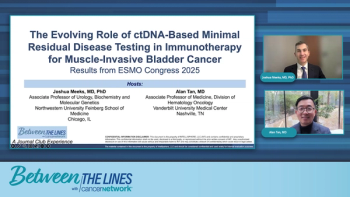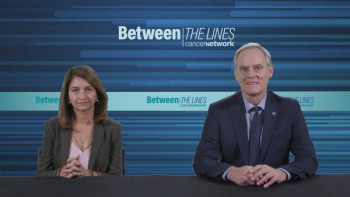
Safety Strategies for GPRC5D-Directed and T-Cell Engager Therapies
Panelists discuss how talquetamab’s unique skin and taste toxicities are manageable through dose modifications and supportive care, with IVIG prophylaxis being crucial for BCMA-targeted but not necessarily GPRC5D-targeted therapies.
Episodes in this series

GPRC5D-directed therapy with talquetamab presents unique on-target, off-tumor effects that require specific management strategies but are generally well tolerated by patients. The most common adverse effects include dysgeusia (taste changes) and skin toxicity, both of which are dose-related and reversible with appropriate management. Patients can be effectively counseled about these expected adverse effects, and simple interventions such as emollients for skin care and clear nail polish for nail protection can significantly improve tolerability and patient quality of life.
The management of talquetamab-related adverse effects has evolved through clinical experience, with dose modifications and schedule adjustments proving effective in maintaining patients on therapy. The median time to response is approximately 1 month, with peak response occurring around 3 months, allowing patients to see clinical benefit while adverse effects are being managed. The discontinuation rate remains low at 2% to 3%, indicating that most patients can successfully continue treatment despite initial adverse effects, particularly when appropriate supportive care measures are implemented proactively.
Infectious complications with bispecific antibodies vary by target, with BCMA-directed therapies showing higher infection rates compared with GPRC5D-targeted agents. Prophylactic measures for BCMA bispecifics include TMP-SMX for Pneumocystis jirovecii pneumonia prevention, herpes zoster prophylaxis, and importantly, proactive intravenous immunoglobulin (IVIG) supplementation to prevent severe hypogammaglobulinemia. The universal development of hypogammaglobulinemia with BCMA-targeted therapies makes early IVIG intervention crucial for infection prevention, while GPRC5D-directed therapy shows less impact on humoral immunity and may require less intensive immunoglobulin replacement for most patients.
Newsletter
Stay up to date on recent advances in the multidisciplinary approach to cancer.
















































































